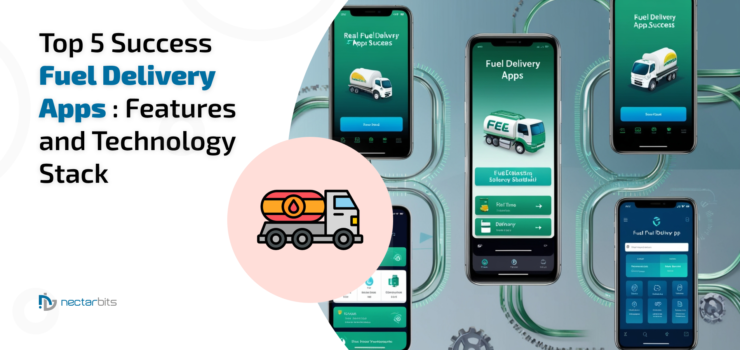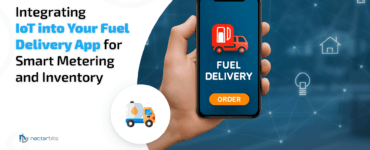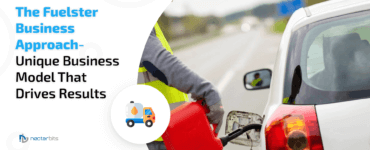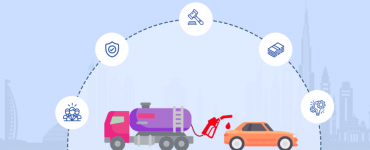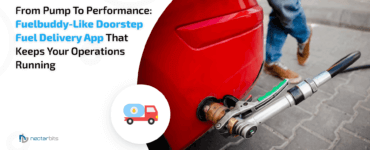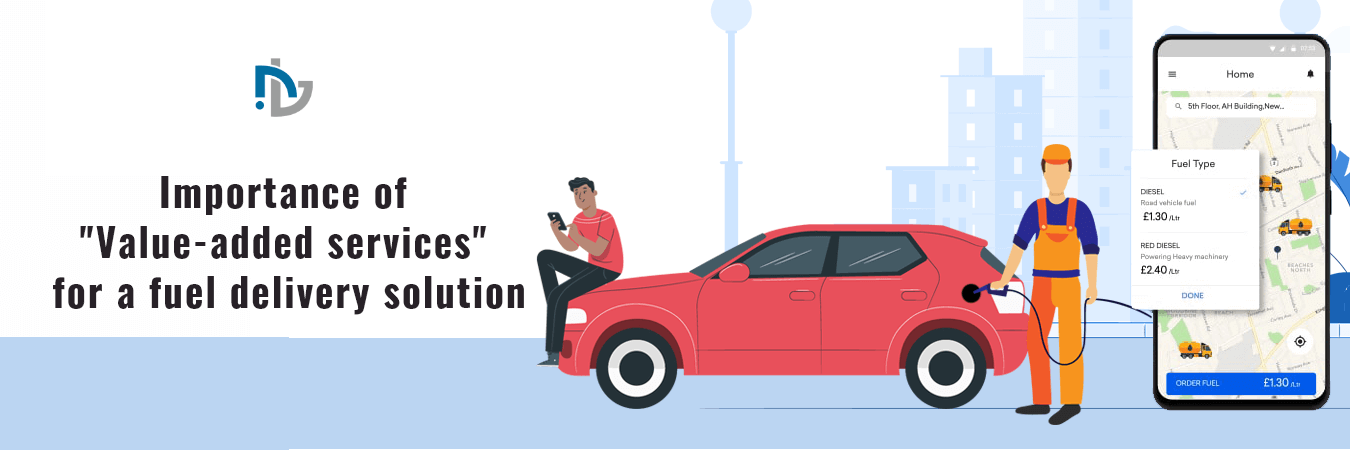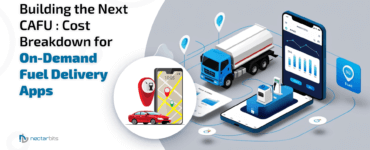Frequent visits to the fuel station and long waits greatly inconvenience individuals, trucking companies, and office buildings. On-demand fuel delivery start-ups perfectly answer this annoyance by delivering fuel anytime, anywhere. In addition to 24/7 fuel deliveries, other services like vehicle repair, maintenance, tank sales, rentals, and inspection services are also offered locally and worldwide. Fuel delivery apps are gaining global traction because of their convenience and accessibility.
It has become the hottest trend across the globe. Increasingly, the new start-ups are trying their hands in the niche industry with a unique range of services.
Top startups in Fuel delivery providers globally: Are Earning Millions With Delivery Services
EzFill: On-Demand Fuel Delivery in the USA

EzFill is an application-based fuel delivery service launched in Miami and serves customers with a split of commercial and individual needs. The application enables users to order fuel on time, so they do not have to make it to the fuel stations in person.
EzFill users only need to download the app, create an account, and order fuel delivery. A fuel truck usually arrives at the agreed-upon time and place to refuel the vehicle. Services available from EzFill also include car washing and check-up services.
EzFill has existed since 2016 and has grown very fast. Due to market and viability factors, the firm obtained $3 million as the initial capital for developing its mobile application and acquiring additional fuel trucks. In 2021, EzFill secured $12 million in a Series B round for its expansion and founding services.
Filld: Gas delivered to your car

Since 2015, the start-up has started offering its services in the Washington and Bay Area with a unique delivery model. The on-demand delivery mobile app has created its distinctive niche with working hours. They deliver fuel overnight between 10 PM and 5 AM. This strategy helps them deliver fuel in reduced time because there is comparatively less traffic at night.
The users are required to download the mobile app and complete the registration by providing their mobile number, and the app asks them daily whether they need fuel. When the user consents, the fuel truck arrives and refills the tanks. The delivery fee is associated with the local average price of the fuel.
The company, which earns nearly $5 million in revenue daily, has raised $28.3 million in funding. Initially, it raised $3.25 million in seed funding in 2015, $9.65 million in Series A funding in 2019, and $15 million in Series B funding in 2020.
Cafu – Petrol & Diesel Delivery in UAE

CAFU is the first fuel delivery start-up to enter the UAE, and it is stepping in with the digitalization trend. The service provider delivers fuel to cars, motorbikes, boats, and fleets, in addition to car inspection and maintenance services.
The company employs on-demand and subscription models to refuel the vehicles’ tanks. Under the on-demand model, users must pay 18 AED for every fill-up service. For a subscription, users pay 26 AED and receive the benefits of unlimited fuel deliveries. The delivery charges were eliminated after the Corona outbreak to encourage people to favor on-demand delivery services.
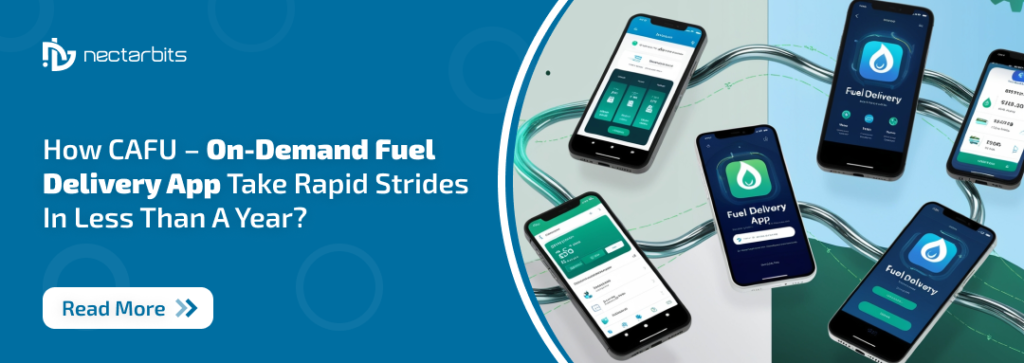
The business, which has 80 custom-built trucks, began its international fuel delivery services in 2018, following multiple funding rounds. Removing delivery charges during the pandemic has helped the business increase its active users to 75% and marginally increase ROI.
Yoshi – Freedom is a Full Tank

The Silicon Valley-based start-up was born to address people’s problems at gas stations. It allows people to book fuel delivery services now or later. For the Yoshi membership fee of $20 per month, users will get unlimited deliveries without paying the delivery fee.
The company takes a big step by providing a bouquet of services, such as 24/7 doorstep fuel delivery and car maintenance services, including oil changes, car washing, wiper blade changes, tire checking, engine cleaners, and more.
The business, founded in 2016, raised $15 million to start the Fuel on Wheels business. Later, the company raised $2.1 million to expand its gas delivery and car wash service. Yoshi raised $23 million in 2020 for on-demand car maintenance services in series B funding.
Maintenance, cleaning, and repair services are also offered when users request them, in addition to car fueling services.
Read More:- Fuel Delivery App Development: Cost Analysis in 2024
Flyers –Gas & Diesel Delivery: Bulk Fuel Delivery Service

The start-up is famous for bulk fuel delivery for businesses across California, Arizona, and Nevada. It aims to meet the fuel requirements of large enterprises, trucking businesses with a fleet of trucks, or independent gas stations with the help of 17 nearby warehouses.
The bobtail trucks were leveraged to deliver fuel for orders between 400 and 14000 gallons. The company boasts of competitive pricing, customer service, and huge daily deliveries (approximately 2 million gallons).
FleetFuelz: National Fuel Delivery – On-Site Fueling Solutions

The company is known for providing a range of products—gasoline, lubricants, diesel, and aviation fuel—to meet the different fuel needs of users. They facilitate on-site deliveries for the construction and mining industries, transportation and fleet vehicles, and wet-hose services for trucks, machines, and generators.
The company has also launched the first fuel card for on-site and on-demand services, which helps businesses get fuel at discounted rates.
Fuel Delivery Apps in Asia and Africa: A Growing Market
Fuel Delivery Market in Asia
As with the convenience that customers demand from services related to refueling, the fuel delivery industry in Asia and Africa has recorded significant growth. In Asia, particularly in India, there is an increase in the number of startups introducing self-solutions in fuel delivery. These startups serve many markets, such as residential subscribers’ markets or markets of commercial buildings and big fleets.
The increasing rate of urbanization and especially the increasing popularity of online and digital payment has boosted the use of such services. MyPetrolPump and FuelBuddy serve major cities where you can order fuel online to be delivered to your doorstep at the right time, avoiding many trips to fuel stations. Incorporating such features as GPS tracking, real-time notification and multiple payment options for a particular ride also makes the application used by many clients thus popular.
MyPetrolPump: Fuel Delivery in India

MyPetrolPump is a new-generation start-up company in Bangalore that delivers fuel to homes, apartments, companies, hospitals, and other commercial establishments. The service has helped cut the many numerations to fuel stations and long queues, especially for companies with many cars.
The consumers then have to download the MyPetrolPump app, register, and place an order indicating the fuel they need. The fuel truck comes to the agreed-upon point and provides petrol to the car.
The current start-up, MyPetrolPump, has been operating since 2016 and has already captured the Indian market. The startup raised $1.6 million in seed funding to spread services to prominent metropolitan areas across India. Besides, the company raised an extra $4.6 million in 2019 to fuel up its operations in its Series A round.
Fuel Delivery Market in Africa
Another emerging, though less developed, market in Africa is fuelling delivery, with emerging fuel-delivery app startups making good progress in places like South Africa and Kenya. These companies provide on-demand fuel delivery services and solve the problems characteristic of the African market, namely, lack of fuel and difficulties with logistics. The concept of mobile applications and lean-integrated start-ups has enabled these start-ups to capture the market base of customers, including end consumers and B2B consumers.
The expansion of fuel delivery applications in Africa has changed fuel availability and has positively impacted the creation of new jobs and increased business performance. Therefore, the markets will grow, and people will integrate fuel delivery services into their everyday lives because of technology and awareness of the services.
Popular Fuel Delivery App Business Models
The successful fuel delivery businesses like- Booster, Filld, Yoshi, CAFU, and Gaston enjoyed incredible success with immense popularity, high users, and huge ROI. However, the business model they inculcated in services and sales propositions made them different and unique. They are:
- Buying fuel from the fuel stations in bulk at a lower cost and zero infrastructure cost allows them to sell the fuel to the users at a comparatively lesser cost.
- Leverage specially designed vehicles that allow them to receive gas directly from suppliers and pump fuel into the users’ cars, cutting out middlemen.
- Facilitating on-demand car wash, oil change, car maintenance services, and fuel delivery.
- Offering fuel delivery subscription plan where the users benefit from unlimited car refueling service.
- Providing the service between 10:00 PM to 5:00 AM results in more deliveries in less time due to comparatively less traffic or no traffic.
- In the B2B model, the fuel delivery business partners with corporates where fuel delivery, car wash, and car maintenance services are offered in office buildings, which results in massive orders and sales.
Leading Monetization Model for Fuel Delivery Business
Irrespective of business type and size, every entrepreneur expects constant revenue after planning, investing huge bucks, and spending a lot of time. This is relevant as the cost of developing an on-demand fuel delivery app is a considerable investment for any business. For the new players on the on-demand block, we have enlisted a few ways that successful fuel delivery businesses employ to generate revenue.
- The fuel delivery businesses directly partner with fuel suppliers, who help them obtain fuel at a much lower price. They sell fuel at nearly the price of petrol stations.
- Delivery fee is the primary source of revenue, where expedited deliveries increase the charges, generating extra profit.
- The membership fee, which includes an annual subscription plan for unlimited deliveries, generates huge bucks.
- Partner with nearby fuel stations and allow them to run a mutual business in exchange for a certain amount for providing a digital space on the application.
- With Android And iOS app development, entrepreneurs at the later stage can charge registration fees for doorstep fuel delivery at their fingertips.
- With the B2B model, the business can acquire many services even with trivial marketing investment, as bulk orders generate revenue faster.
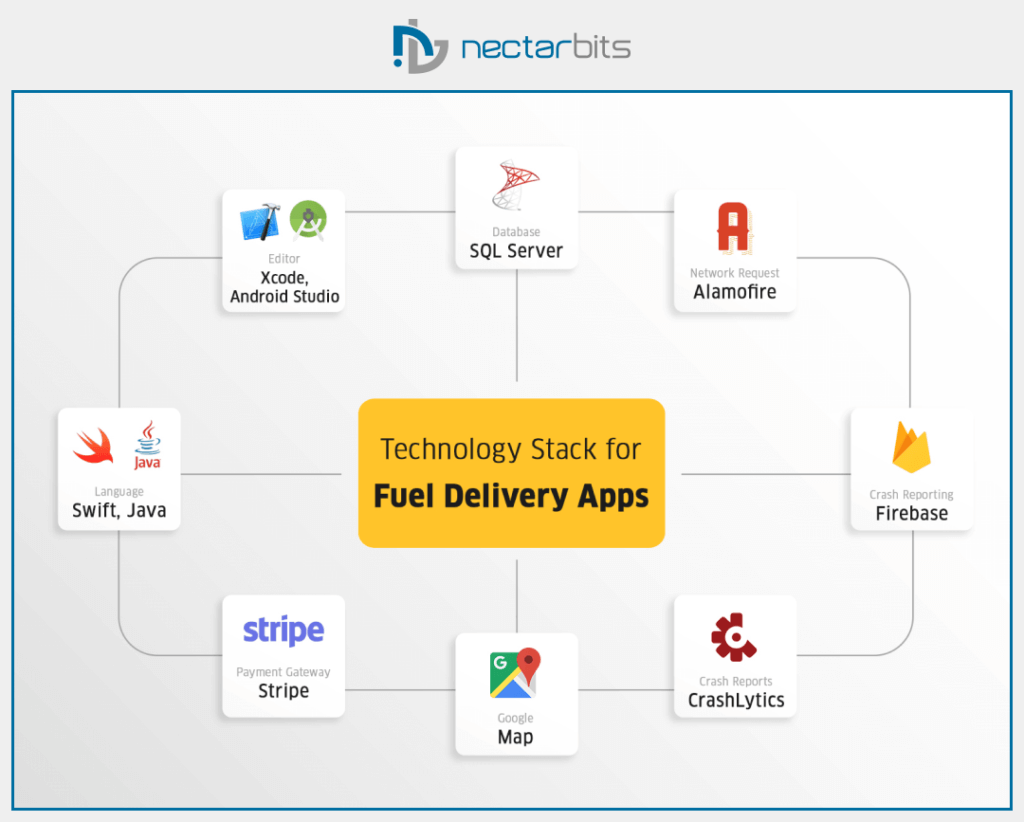
Fuel App Technology Stack
Best Technology Stack for Top Fuel Delivery Apps
The right mix of technologies, tools, and tactics helps build a successful fuel delivery app like Booster, Filld, CAFU, and Yoshi. Let’s dive in!
Front-End Technologies that Aim to Mesmerize
The phenomenal app’s UI and UX make the user repetitively use the same application in a sea of apps of the same genre. The mobile-responsive design includes optimal graphics, so the app’s performance won’t be negatively impacted.
| Aspect | Details |
| Purpose | Ensures optimal performance, user interface (UI), and user experience (UX). |
| Mobile-Responsive Design | Designed to work flawlessly on various devices, ensuring optimal graphics without impacting performance. |
| Android App Development | Languages Used: Java, Kotlin, Flutter Features: Latest programming languages ensuring high performance and seamless functionality for Android users. |
| iOS App Development | Languages Used: Swift, Objective C Design Themes: iOS Design Themes Web Technologies: HTML5, CSS3, JavaScript (JS), Bootstrap, Angular Features: Enhances utility and convenience in the app. |
Back-End Technologies that Aim to Perform
The back-end technologies are the backbone of the app, making it perform flawlessly in the real world. They hide the ugly reality of the app and display functionalities to the users in the easiest form to understand.
| Aspect | Details |
| Purpose | Serves as the backbone of the app, ensuring flawless performance and providing functionalities in an easy-to-understand manner. |
| Programming Languages | Scripting Languages: Ruby, Python, Node.JS Features: These languages power the logic and data handling of the application. |
| Cloud-based Back-end Servers | Types: JSON API, REST API, GraphQL, XML APIs Features enable communication between different parts of the app and third-party services, facilitating data exchange and remote procedure calls. |
| Databases | Types: NOSQL, MySql, MongoDB Features: Used for storing and retrieving data efficiently, supporting structured and unstructured data. |
| APIs | Types: JSON API, REST API, GraphQL, XML APIs Features: These enable communication between different parts of the app and third-party services, facilitating data exchange and remote procedure calls. |
Third-Party Integrations with Fuel Delivery Apps
The readily available third-party APIs eliminate the need to engineer every functionality from scratch. They are available in the plug-and-play form, so no coding is required from development to integration. Various third-party integrations that are popular in fuel delivery apps are:
- Using social media APIs, you can enable registration or sign-in directly through social channels without entering the credentials every time.
- Users can make payments however they want through multiple gateways, such as Braintree, Authorize.Net, Stripe, and PayPal integration. The payment gateways execute and manage transactions and ensure data security from start to finish.
- GPS integration allows users and drivers to track each other’s locations in real-time to stay up-to-date about the truck’s location and easily arrive at the destination location. Google Maps and Apple Maps integration also help in viewing the location on the map and getting directions for the optimized routes.
- Push.io is a well-known push notification API that allows you to integrate an in-app notification feature that keeps the user easily informed about every progress made in the fuel delivery booking.
- Zoho, Salesforce, and Microsoft Dynamics-like CRMs are leveraged to understand customers better and improve customer relationship management.
- Embrace KISSmetrics, Piwik, Hotjar, and Woopra-like analytics tools to identify all the touchpoints that negatively impact performance or ruin the customer experience.
Conclusion
Fuel delivery at the doorstep is the most effortless, efficient, and eco-friendly way to refuel the tanks. Presently, new start-ups are launching one day after another, but there is a lot that still needs to be explored. It would help if you chose prudently before selecting any service provider for getting your car tanks refilled daily or every week, depending on your need, because the services delivered by every fuel delivery business vary greatly.
Fuel delivery at the doorstep is the most effortless, efficient, and eco-friendly way to refuel. With new startups launching daily, choosing the right service provider is crucial. Before deciding, consider factors like service availability, additional services, and overall delivery price.

Frequently Asked Questions (FAQs)
Fuel delivery apps are mobile applications that allow users to order fuel delivery directly to their location. This service is designed to save time and hassle by bringing the fuel to you rather than requiring a visit to a gas station.
– They offer convenience by scheduling deliveries at preferred times.
– Many apps also provide additional services like car maintenance and washing.
On-demand fuel delivery services work through a mobile app where users can place an order for fuel delivery. The app coordinates with local fuel suppliers and delivery trucks to ensure timely refueling.
– Users schedule deliveries or request immediate refueling.
– Some apps offer subscription models for unlimited deliveries or additional services.
On-demand fuel delivery apps offer numerous benefits, including saving time, avoiding long queues, and delivering fuel right to your door. They’re particularly useful for busy individuals or fleet operators.
– The convenience of ordering fuel from anywhere.
– Some services offer additional features like car maintenance and emergency refueling.
Leading fuel delivery service providers include EzFill, Filld, and CAFU. These companies offer innovative solutions like nighttime deliveries, subscription services, and comprehensive refueling options.
– EzFill operates in the USA with fast and reliable delivery services.
– Filld focuses on nighttime deliveries to avoid traffic, and CAFU provides fuel delivery and maintenance in the UAE.
Emerging trends in the fuel delivery industry include expanding services to new markets in Asia and Africa and integrating advanced technologies like real-time tracking and multiple payment options.
– Growth of self-service fuel delivery solutions in urban areas.
– Increased use of mobile apps with features like GPS tracking and digital payments.


